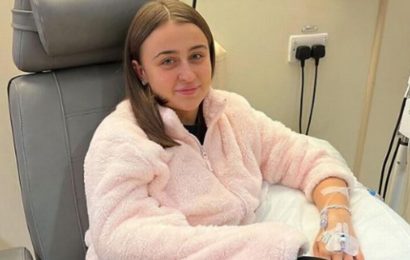Each year, dentists in the United States perform more than 15 million root canals on infected teeth, removing the inflamed pulp and filling the emptied canal with inert materials such as rubber and cement. What remains is a mineral shell in place of a living tooth.
Teeth lacking dental pulp are more vulnerable to cracking and can respond poorly to future bacterial infections and mechanical injuries. In particular, we'd prefer to avoid killing and removing a child's permanent tooth that is still growing, but instead, help the roots thicken and lengthen."
Vivek Kumar, bioengineer at NJIT
Backed by a $3 million grant from the National Institutes of Health, Kumar, the principal investigator, and co-investigators Emi Shimizu and Carla Cugini at the Rutgers School of Dental Medicine have proposed an alternative remedy: restoring the lost tissue in the tooth cavity by inducing the body to regenerate it. Their goal is to develop a materials-based therapy that does not contain live cells and therefore could be sold off-the-shelf. It would be the first of its kind.
The team has created an injectable hydrogel designed to recruit a person's own dental pulp stem cells directly to the disinfected cavity after a root canal. Composed of biocompatible amino acid peptides that aggregate into fibers, the hydrogel delivers biological cues to direct tissue growth, as well as a scaffold structure to support it.
There are presently no FDA-approved technologies that successfully restore native dental pulp.
A procedure known as over-instrumentation is performed on children's immature permanent teeth with necrotic pulp, prompting new growth of the still-forming root by eliciting a healing response. The tissue outside of the emptied canal, when poked, forms blood clots that secrete a protein called growth factor that signals cells to produce new tissue to support the root. While some regrows, it is disorganized, lacks the needed tissue differentiation – including nerve cells – and fails to mimic soft tissue, said Shimizu, an endodontist that specializes in tissue regeneration.
By contrast, the team's hydrogel therapy mimics the body's own growth factor signaling, and, coupled with known antimicrobial mechanisms engineered into those materials, is capable of promoting tissue healing and regeneration.
In early animal clinical trials, dogs injected with the team's hydrogels formed soft tissue from the tooth apex to the crown in just under a month.
"We saw a lot of different tissues, including blood vessels, nerve bundles and pulp-like cells," Kumar said, adding, "One of the primary goals of this project is to determine the type of cells that reorganize and repopulate the regenerated tissue."
One of the core challenges tissue engineers face is creating blood vasculature, the plumbing that delivers nutrients to regenerated cells.
To address the problem, the team's hydrogel contains a protein known as vascular endothelial growth factor that stimulates the growth of new blood vessels, noted Shimizu.
Cugini, a microbiologist who studies oral microbial biofilms, focuses on another critical component of the therapy: inhibiting harmful bacterial growth in the new tissue.
"Even in healthy oral microbial communities, the species that can cause disease, pathobionts, are usually at low levels. When they increase in numbers, a healthy microbiome can shift to a pathogenic one. Depending on the oral disease, different species proliferate," Cugini said.
She noted that a peptide Kumar developed previously for a different anti-infection application was able to destroy the germ P. aeruginosa by disrupting its membrane, adding, "We are going to look at a panel of oral bacteria to determine if this antimicrobial peptide hydrogel, known as K6, is effective against them. We feel confident it will not disrupt the entire microbiome, because our localized delivery to the canal space and hydrogel properties ensure the peptide remains where we put it."
In a separate study, the group tested a different hydrogel that contained just the antimicrobial peptide. The results showed that in combination with the peptides that spur blood vessel development, it was capable of creating scaffolds that performed both critical functions. Going forward, they plan to combine and test both therapies in a single hydrogel.
Kumar has developed hydrogels for a number of therapeutic applications. His delivery mechanism is customizable and composed of Lego-like strands of peptides with a biological agent attached at one end that can survive in the body for weeks and even months, where other biomaterials degrade quickly. Its self-assembling bonds are designed to be stronger than the body's dispersive forces; it forms stable fibers, with no signs of inducing inflammation, that rapidly incorporate into specific tissues and collagen, recruiting native cells to infiltrate.
The hydrogel, which is also composed of amino acids, is engineered to trigger different biological responses depending on the payload attached. These platforms can deliver drugs and other small cargo over days, weeks or months. Kumar's lab has published research on applications ranging from therapies to prompt or prevent the creation of new blood vessel networks, to reduce inflammation and to combat microbes.
New Jersey Institute of Technology
Posted in: Medical Science News | Medical Research News
Tags: Amino Acid, Bacteria, Biofilms, Blood, Blood Vessel, Blood Vessels, Children, Collagen, Dental Pulp, Drugs, Growth Factor, Hydrogel, Inflammation, Medicine, Membrane, Microbiome, Nerve, Nutrients, Peptides, Permanent Teeth, Protein, Research, Root Canal, Stem Cells, Teeth, Vascular, Vasculature
Source: Read Full Article


